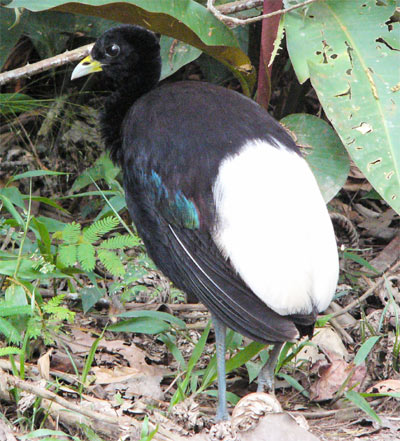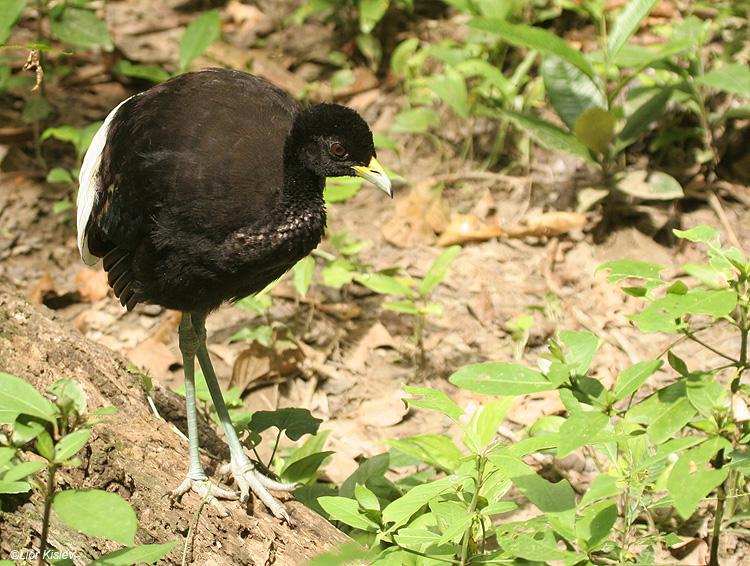
Psophia leucoptera
TAXONOMY
Psophia leucoptera Spix, 1825, Rio Madeira, Brazil. Two subspecies.
OTHER COMMON NAMES
English: White-winged trumpeter; German: Weissflьgel-
Trompetervogel; Spanish: Trompetero Aliblanco.
PHYSICAL CHARACTERISTICS
18–20 in (45–52 cm); 2–3 lb (1–1.5 kg). Adults have dark
plumage with contrasting white wing tips, which form a light
patch on the back. Long neck and legs, hunchback appearance.
Juveniles are reddish with cream underparts and white stripes.
DISTRIBUTION
South of the Amazon and west of the Madeira through parts of
Brazil, Peru, and Bolivia.
HABITAT
Dense tropical rainforest.
BEHAVIOR
Very social bird that uses a complex set of calls to communicate.
Travels in groups of three to 12.
FEEDING ECOLOGY AND DIET
Forages mostly on fruit knocked to the forest floor by primates.
Insects, such as beetles, ants, and termites also are part
of the diet.
REPRODUCTIVE BIOLOGY
Uses a rare breeding system, cooperative polyandry, in which a
dominant female mates with three dominant males and the
other adults in the group help feed and care for the chicks.
Nests in hollow tree cavity. Lays a clutch of three eggs. Incubation
is 23–29 days.
CONSERVATION STATUS
Not threatened, but population is shrinking due to loss of
HABITAT
and hunting.
SIGNIFICANCE TO HUMANS
None known.
Photo Gallery of - Pale-winged trumpeter




 Animalia Life
Animalia Life